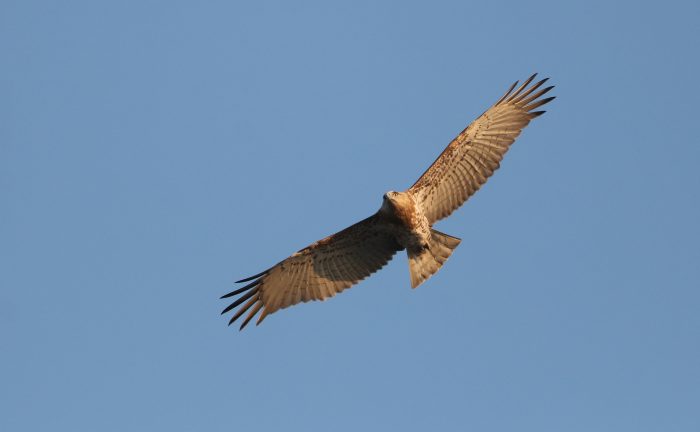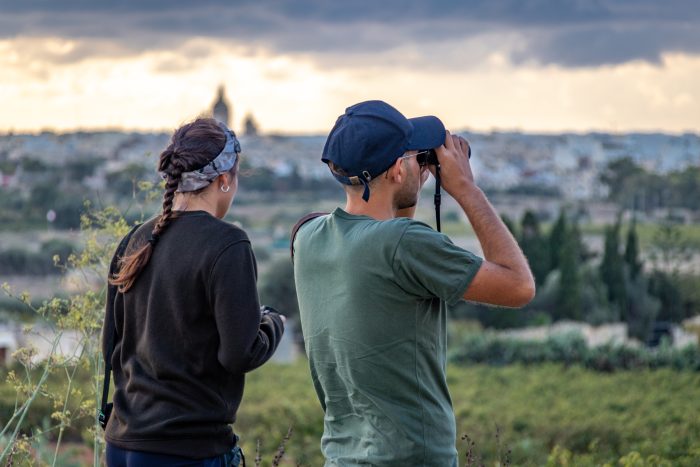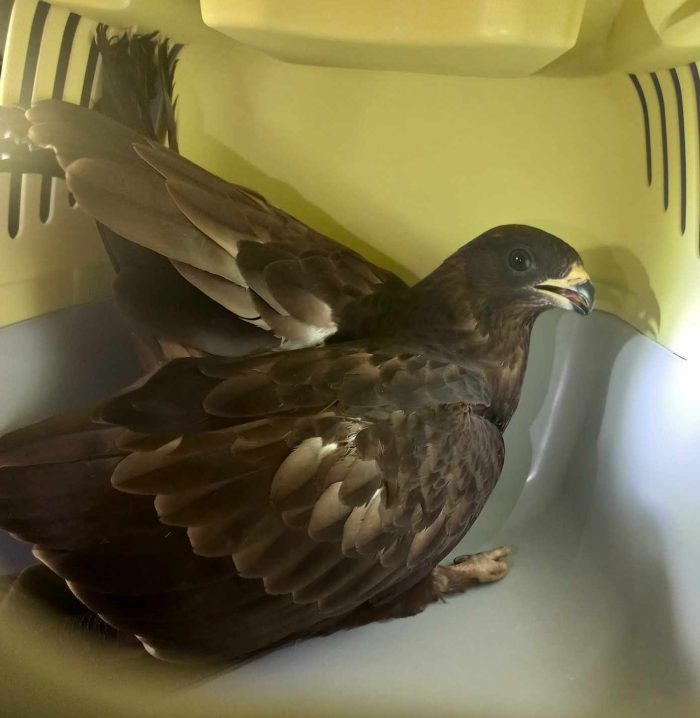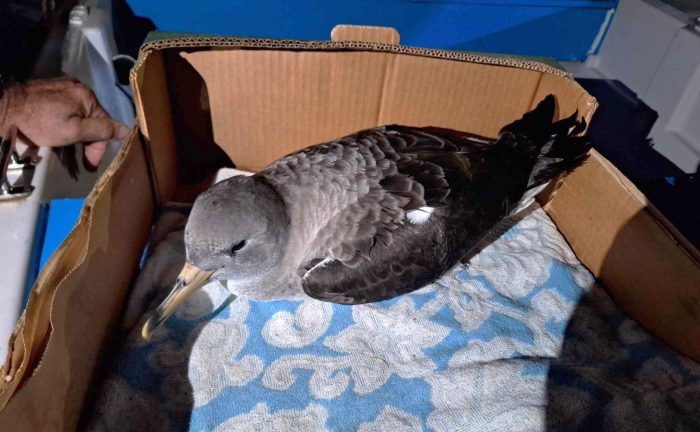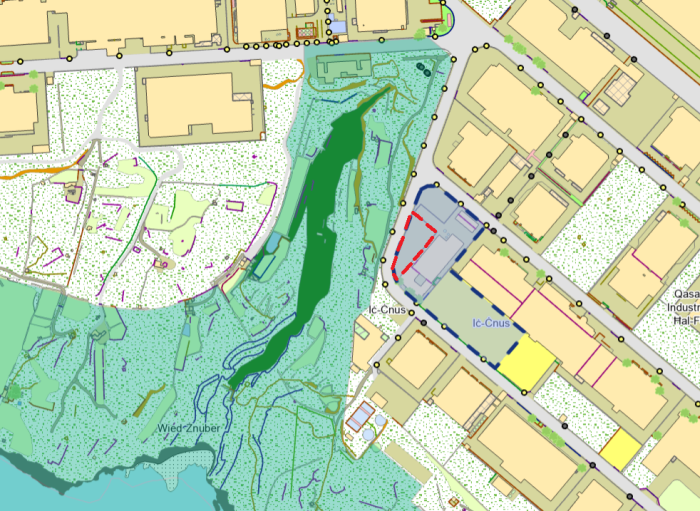On the frontlines is our new monthly newsletter section covering the activities of BirdLife Malta’s conservation, policy and nature reserve (Salina, Simar, Għadira and Foresta 2000) teams, together with an update about rare and scarce bird species observed.

Illegalities during the ongoing hunting season
As soon as the hunting season began, BirdLife Malta started receiving several illegally shot protected birds.
Two young, highly protected Ospreys killed on their first trip to Africa were among these. One adult Greater Flamingo was collected from offshore Ta’ Ċenċ and one adult Western Marsh-harrier from Għar Lapsi.
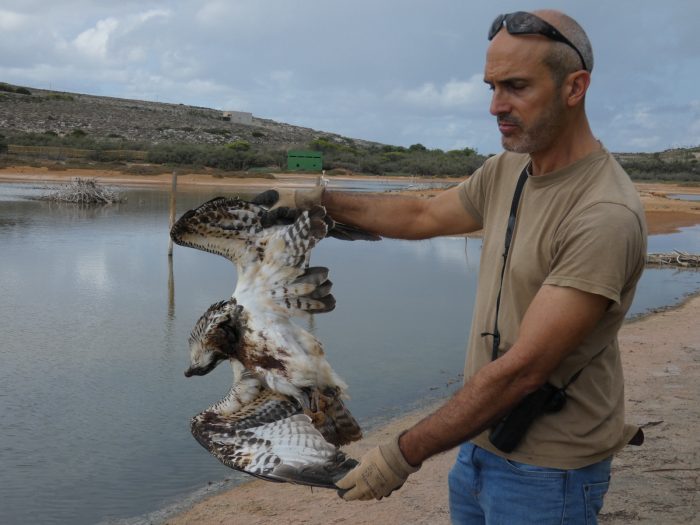
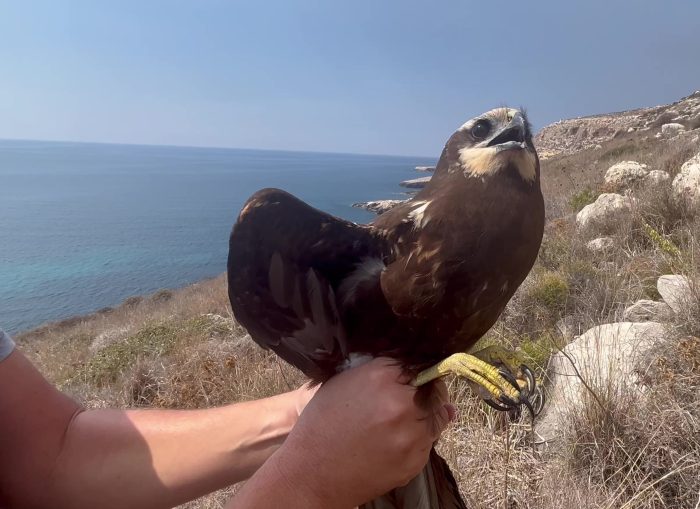

Our Raptor Camp teams are constantly keeping records of all the illegalities seen so far in the field: we witnessed two protected Grey Herons being shot at, and many illegal callers of different species such as Quail, Nightjar, waders, Song Thrush and Starling.
Numerous Marsh-harriers and Honey-buzzards were seen with visible gunshot damages to the feathers. Even though the curfew ends at 7 pm, we frequently heard gunshots after this time.
During these weeks, many migratory protected birds were seen crossing the skies of Malta. Unfortunately, not all of them managed to take off from the island as they were illegally killed by poachers.
Across the island were seen Egyptian Vulture, Booted Eagle, Short-toed Snake-eagle, Lesser Spotted Eagle, Black Kites, one Red Kite, one Levant Sparrowhawk, two Black Storks and many flocks of herons.
To ensure the raptors’ secure migration, our field teams pledged to keep a close eye on their roosting sites.
Regrettably, however, our eyes are not enough to witness all the illegalities that occur during the hunting season.
If you witness any illegal hunting or come across a dead protected species, please call 119 and ask for the EPU (Environmental Protection Unit). You can also contact BirdLife Malta on 7925 5697 or send us a message on Facebook Messenger.
Rehabilitation of injured birds
During the month of September and the first days of October we released back to the wild a total of 12 birds. Some of them were rescued after being found exhausted by migration such as a juvenile Greater Flamingo, a Eurasian Scops-owl and a European Honey-buzzard.
The European Honey-buzzard came to us after receiving a call from Ħamrun Police Station. The bird landed exhausted in an apartment in Pietà scaring the owners.
We were able to release three victims of hunting illegalities: a Grey Heron, a Black-crowned Night-heron and a Yellow-legged Gull. All birds were confirmed shot by the government veterinary but had light injuries enough to have a relatively quick recovery.

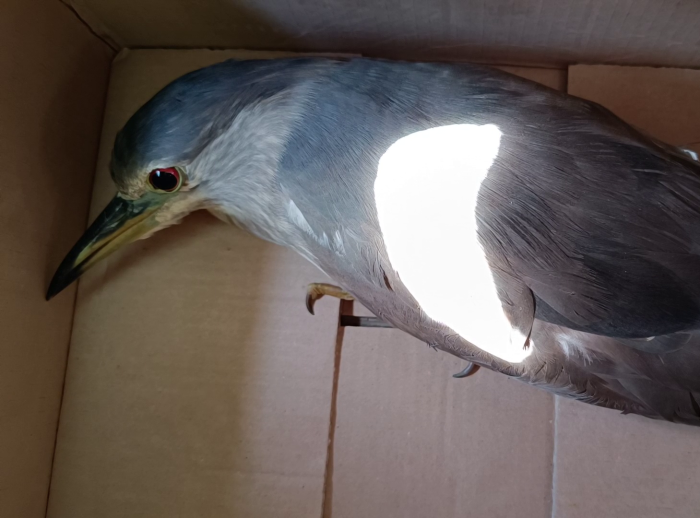
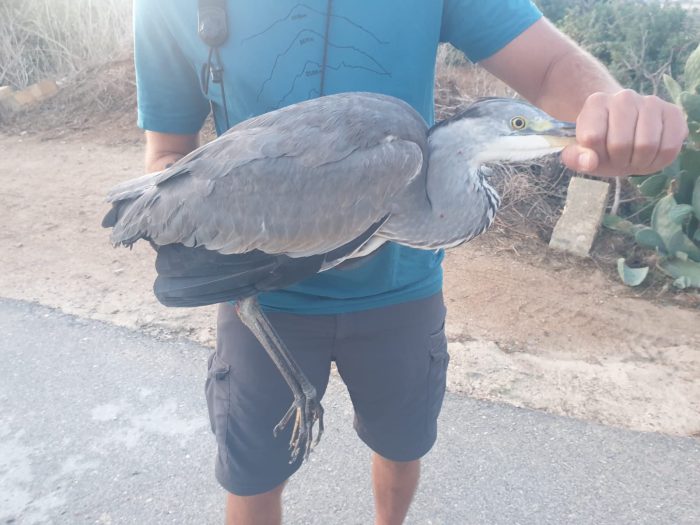
We also released another European Honey-buzzard that was originally confiscated by police in the beginning of August. The bird was first shot down and then kept illegally for almost a year in a small cage where it was not even able to fully open its wings.
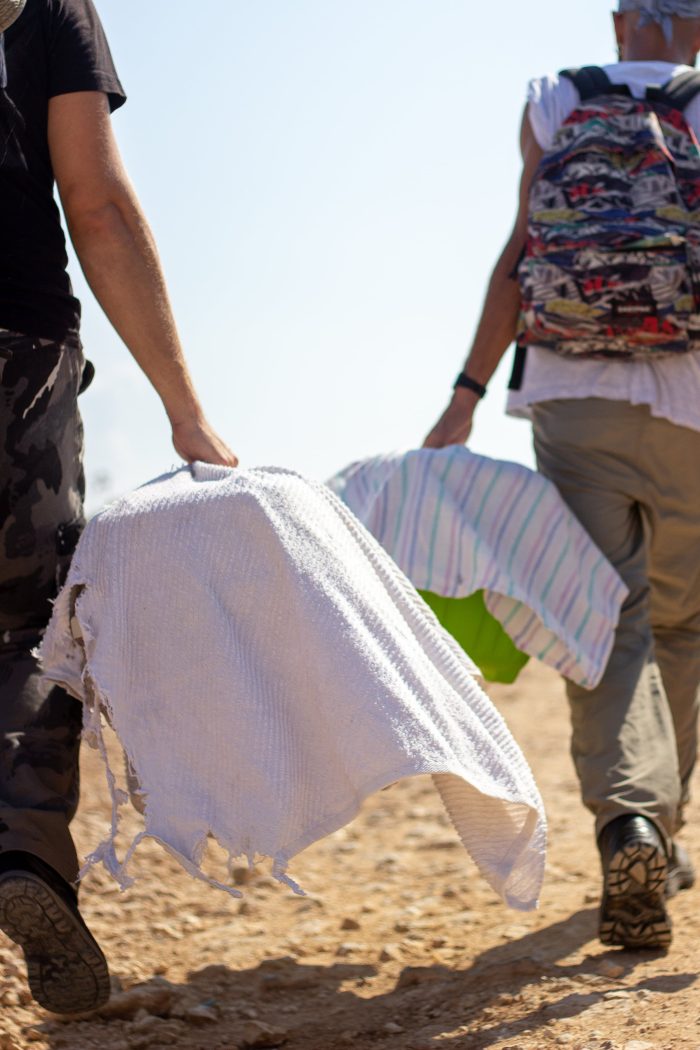
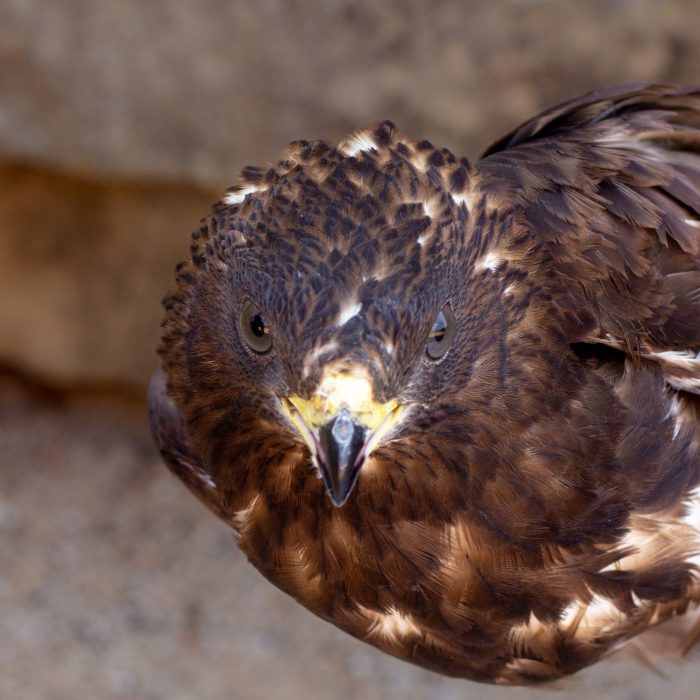

We also rescued the first Scopoli’s Shearwater fledgling of the season, stranded in the sea. It’s unfortunately common to find these pelagic birds confused by light pollution during the moments of their first flight.
Rehabbed Greater Flamingo released

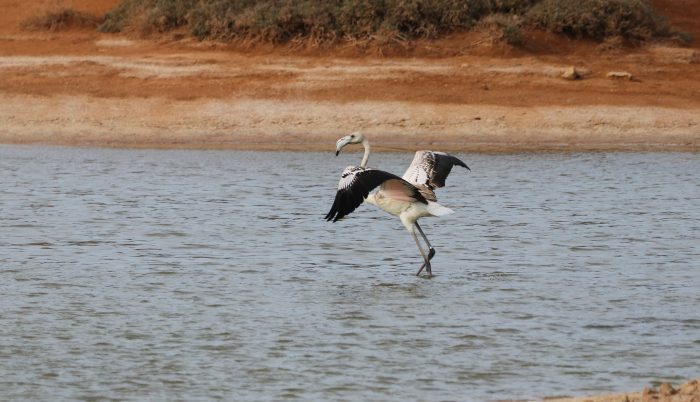
On Saturday 23 September, during a special Facebook livestream which included a bird ringing demonstration ahead of the EuroBirdwatch23 weekend of events, we released a rehabbed Greater Flamingo back into the wild at our Għadira Nature Reserve.
The flamingo, a juvenile, was rescued from Gozo’s Ramla l-Ħamra on 1 September and was probably part of one of several flocks observed migrating over the Maltese Islands at the start of the month. It is normal to see flamingos migrating at this time of year, and it is also a common occurrence that younger flamingos migrating as part of a flock divert from their flock due to fatigue, usually ending up on beaches.
When it was recovered, the bird was underweight, however after a couple of weeks in rehab it regained its weight and the government vet gave the go-ahead for the flamingo to be released. The bird was ringed before it was set free at Għadira, to hopefully continue with its migration south.
This Greater Flamingo was rescued just one day after the incident in Xwejni when another juvenile flamingo that alighted on the rocks – probably also to rest from the bad weather out at sea – was shot down in front of tourists and other people who were enjoying this beautiful sight. A person was seen shooting it down and carrying the bird into a vehicle before escaping from the area.
Click here to watch the Facebook livestream

Salina Nature Reserve
Sightings
Although not a hotspot for birds of prey, during the month of September a number of birds of prey could be seen from the reserve including some Western Marsh-harriers, Montagu’s Harrier and European Honey-buzzard. The first Audouin’s Gull for Salina during this autumn was also seen. Apart from the common wader species like Dunlin, Little Ringed and Common Ringed Plovers, Little and Temminck’s Stints, Curlew and Common Sandpipers, a Ruddy Turnstone and two Eurasian Oystercatchers were recorded. A Great Cormorant has been seen on several days flying into the reserve, fishing and perching on top of the “Dejma” cross in the salt pans. Common Kingfishers can also be spotted regularly flying across the salt pans and chasing each other. On some days different flocks of herons passed over the reserve and some settled for some time to rest. These included Grey, Purple, Black-crowned Night-herons as well as Little Egrets.
On the other side of the reserve, a Northern Shoveler made the restored wetland its home for a couple of weeks, same as a Western Water Rail and a Spotted Crake. This site has also become a preferred feeding area for waders.
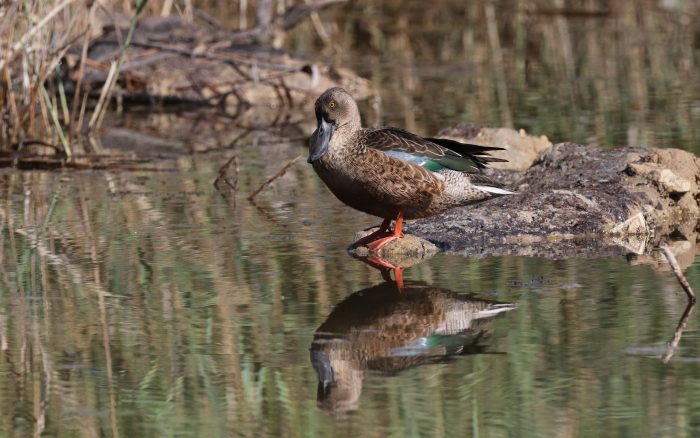

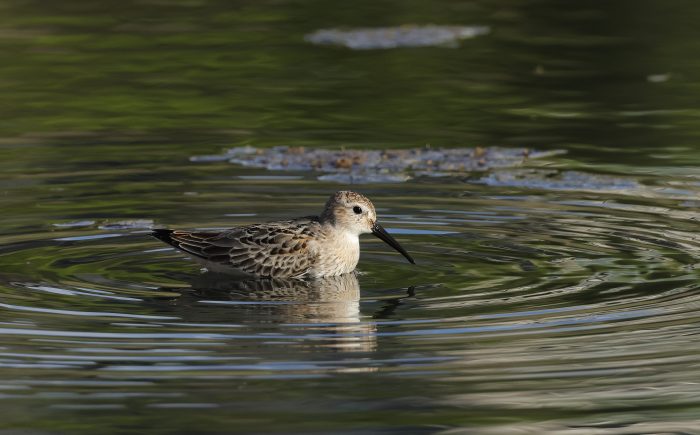
Visits
The hide in the restored wetland is now open to the public twice a week for people who want to visit. There, it is possible to get really close looks at the waders and other birds that venture very close to the hide.
A new island is currently being built in one of the salt pans. A large amount of clay that was dug up from the wetland restoration project is being used for this purpose. And lastly, a new electric water pump is being installed in the salt pans that will serve to flush the salt pans on a regular basis. This is done in order to control the salinity levels in the salt pans in favour of biodiversity.
Għadira Nature Reserve
Sightings
Southbound Trans-Saharan migrants were evident at Għadira Nature Reserve throughout September albeit in low numbers. Small flocks of waders were observed daily including Curlew Sandpipers, Dunlins, Common and Little Ringed Plovers, Common Snipe and Little Stint. Of particular note was a Spotted Redshank on 5 September and another two Spotted Redshanks in the last week of September. A flock of 26 Pied Avocets were seen in Għadira Bay on 2 September and seven Black-winged Stilts noted on 9 September. Flocks of Greater Flamingos were frequently recorded flying over the reserve at the start of the month.
Heron species were recorded daily at the reserve including up to 30 Little Egrets, that were noted almost daily for the first two weeks. A flock of 42 Purple Herons was seen on the second day of September while various small flocks of Grey and Black-crowned Night-herons were seen on various dates. Amongst duck species, a Pochard was noted on 4 September and a flock of Teals on 7 September. Up to five Common Kingfishers were present daily. Eastern Yellow Wagtails were noted daily in low numbers. A Lesser Whitethroat was ringed on 29 September.
On 24 September in the afternoon an Osprey died on an island on the north side of the reserve and was retrieved the following day. The bird was found with a gaping injury on the breast which was later confirmed shot with hunting pellets – yet another victim of illegal hunting in the Maltese Islands.

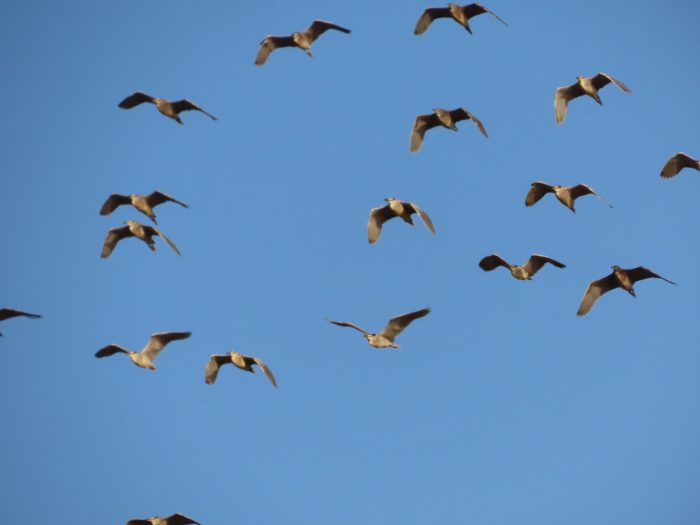

Works
Prior to re-opening the reserve after the summer break for the general public in mid-September, works on the visitor centre were concluded with the installation of sinks in the newly refurbished toilets and resin flooring applied to the entrance and toilet area.
Bird ringing was carried out on 20 dates apart from weekends with a total of 90 birds ringed in September including amongst others Little Stint; Curlew Sandpiper; Green Sandpiper; Dunlin; Kingfisher; Barn Swallow; Yellow Wagtails and Subalpine, Wood and Willow Warblers.
Bird records were logged daily and the Burrowing Sand Cricket survey was continued on a weekly basis.
Simar Nature Reserve
Sightings
With the advent of autumn the wetland start displaying its autumn colours. Being dynamic, wetlands undergo seasonal changes and this time of year brings out the charm of Simar. The vegetation in the wetland starts exhibiting various colours. Tamarisk trees exhibit various levels of green whilst the Salicornia is a deep red colour. Reeds are in inflorescence forming a reedbed of green flowers. The yellow flowers of the Golden Samphire complete the scenery.
Autumn also brings a vast array of bird species. And this year was no exception. These included Great White Egret, Garganey, Eurasian Teal, Black-winged Stilt, Common Snipe, Purple and Grey Heron, Cattle and Little Egret, Common Sandpiper and Dunlin. Common Kingfishers were present in good numbers whilst the first Common Coots started arriving. Western Water Rail also arrived in good numbers. Unusual for autumn was the presence of Little and Spotted Crakes. Surprisingly, Great Cormorants were also present during the last two weeks when usually these are only seen during October.
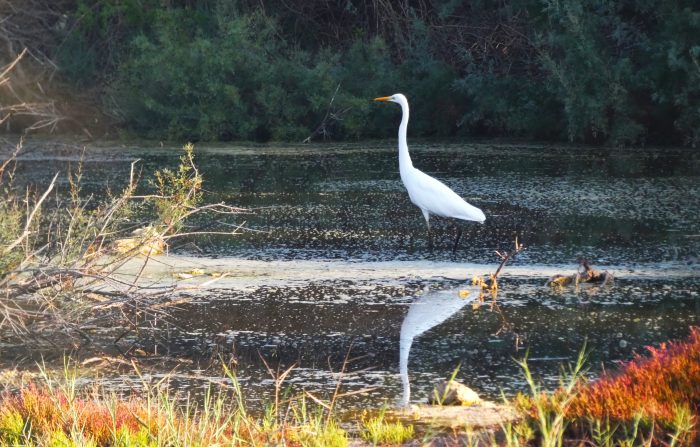

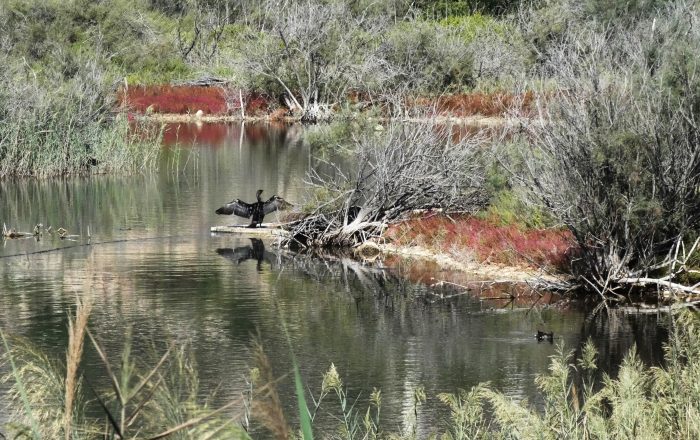
Works
Various works were finalised during this month. The entrance was given a facelift with the installation of a new gate. This replaced the original gate. The wooden fencing along the canal was also accomplished. The new path, shifted away from the old one, was also finished. Gravel was added to the surface whilst a new wooden railing was fixed along the sides. The vegetation along the nature trail was trimmed in preparation for the re-opening of the reserves for visitors.
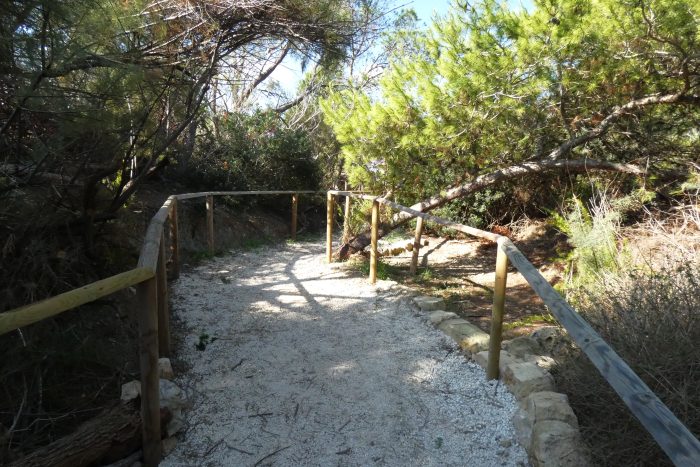
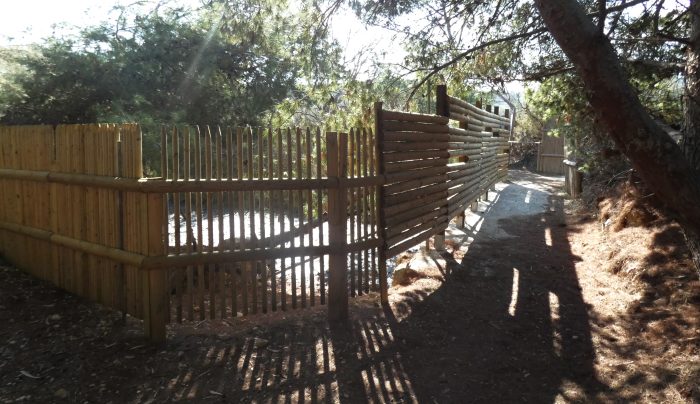
Foresta 2000
Sightings
Despite some rains at the end of August and the beginning of September, visiting Foresta 2000 allows one to see the consequences of a hot summer. The steppe and garrigue areas look extremely pale and yellow, especially in contrast with the fresh light-green Pine needles in the background.
The past month brought us early autumn migrants. Some birds of prey were noticed flying over Foresta, such as the European Honey-buzzard, the Western Marsh-harrier and the Osprey. A bright and loud sighting occurred with the European Bee-eater! In the second part of the month, they appeared around Foresta almost every day. Their loud “proooop-proooop” calls attracted the attention of visitors, and the fortunate ones could see the birds feeding on their insect prey quite closely in the middle of September when a big flock of this birds were visiting the reserve.
A lot of Barn Swallows were also spotted around. They became more active around the reserve, and by the end of the month, they were noticed not only near the west cliffs on the outskirts of Foresta but also on top of the hill and above the fields at the beginning. The western part gifted us with sightings of numerous Blue Rock-thrushes and Wild Rabbits. Grown-up individuals of Sardinian Warblers and Subalpine Warblers were also observed amidst the trees.
The reserve remains a haven for dragonflies and butterflies, including species like the elegant Blue Skimmer and the ethereal Large White butterfly, which continue to grace the landscape with their delicate beauty.

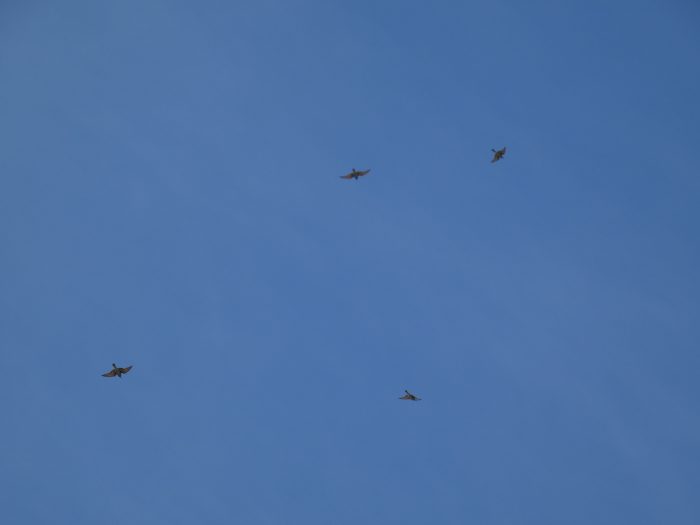

Works
Weekly clean-ups and area control were conducted regularly.
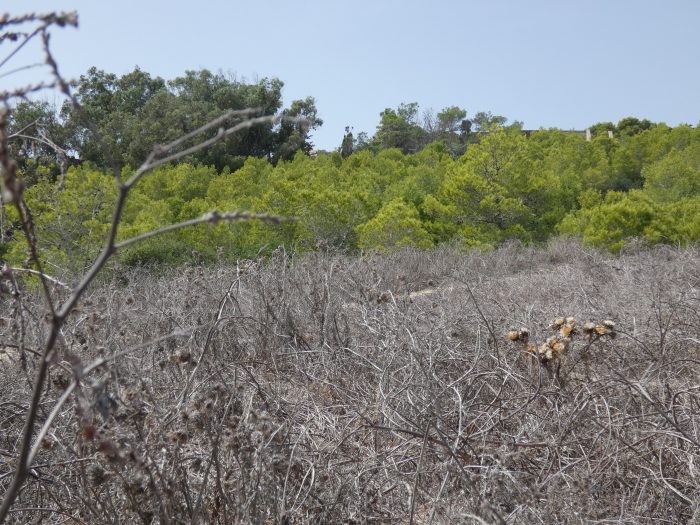
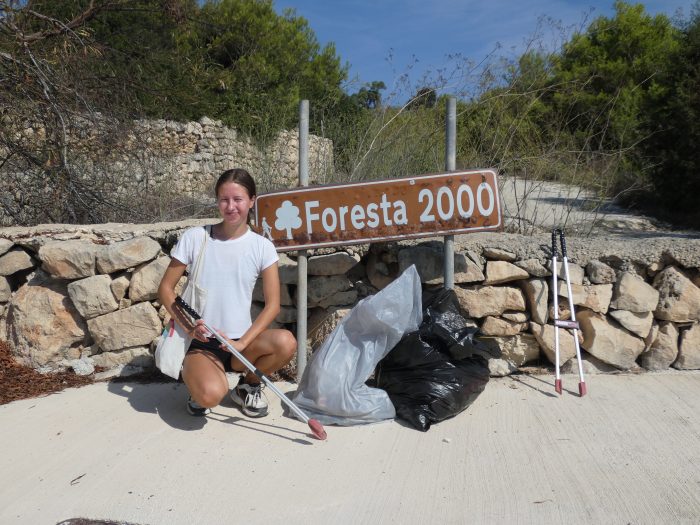

Calling for nature positive energy transition in Maltese waters
Malta’s Energy and Water Agency has issued a draft policy for the deployment of offshore renewable energy for public consultation during September. This policy is a unique chance for our country to deliver an energy transition at sea that achieves climate goals together with healthy and resilient seas.
In our response to the consultation we have insisted for the policy to have a clear focus on the environment and set explicit ecological criteria for such potential projects. Malta is home to internationally important populations of Yelkouan and Scopoli’s Shearwaters and Mediterranean Storm-petrel that rely entirely on the marine environment for survival. If placed in poorly chosen areas, offshore wind farms can have significant negative impacts on marine ecosystems, with seabirds being particularly sensitive (risks of collision, displacement, etc.). The available data shows that waters around Malta are widely used by seabirds, as well as by different migratory bird species. This is why we urge the government to initiate additional studies to acquire sufficient updated information on the use of Maltese waters by avifauna to avoid the risks and effectively mitigate adverse impacts on biodiversity.
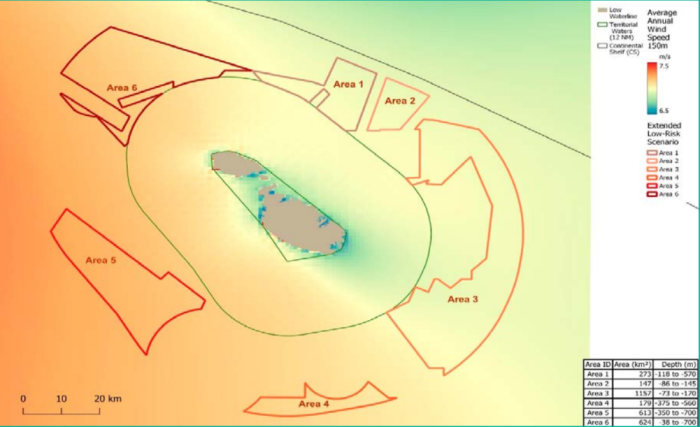
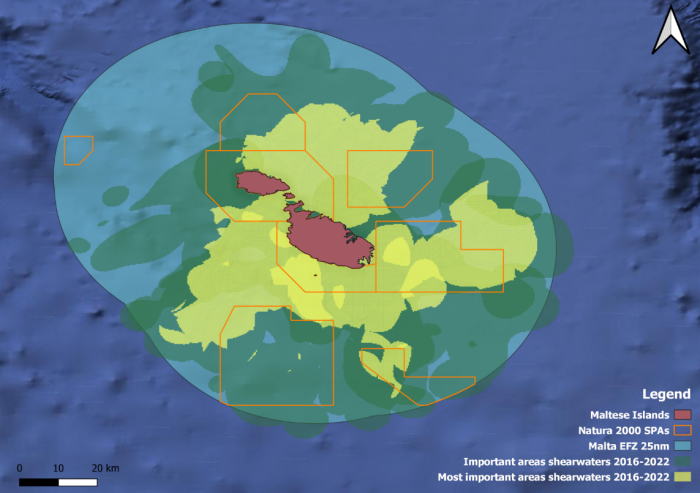
Ħal Far under the spotlight
- Being one of the most light-polluted areas in the Maltese Islands, Ħal Far is also identified as a light-induced seabird grounding hot-spot. Ħal Far cliffs are widely colonised by nocturnal seabirds: Yelkouan and Scopoli’s Shearwaters who depend on darkness for their survival. That is why we keep track of any developments proposed in such sensitive areas as Ħal Far to inform the decision-making process and improve the situation. Last month, we submitted our suggestions for the proposed extension of the Sterling Chemicals building. The development is located on the edge of a Special Protection Area (MT0000033) and in a direct line of sight from Wied Żnuber seabird colony, which means any light pollution from that site would affect nest sites directly. In our comments, we recommended the installation of a non-polluting lighting scheme, as well as highlighted the importance of minimising noise pollution during the construction and operational phases.
- Another development in Ħal Far is likely to bring additional pressure on the coastal Natura 2000 site (MT0000033) designated for seabirds as it proposes an upgrade of an existing drag strip. The situation is even more worrying, as we became aware of yet another development being at a stage of pre-submission and featuring a national multi-purpose motorsports hub. The location of both these schemes allows us to say that they will create one massive motor racing facility. Therefore, it is crucial for the ERA and the PA to assess the cumulative impacts of such a combined project altogether. In the feedback, we emphasised the need to conduct a proper environmental impact assessment and develop sufficient mitigation measures to not compromise the status of the protected area and species. Particularly, vibrations, noise and light pollution during the construction and operational phase are likely to be of significant magnitude and can negatively affect shearwaters.
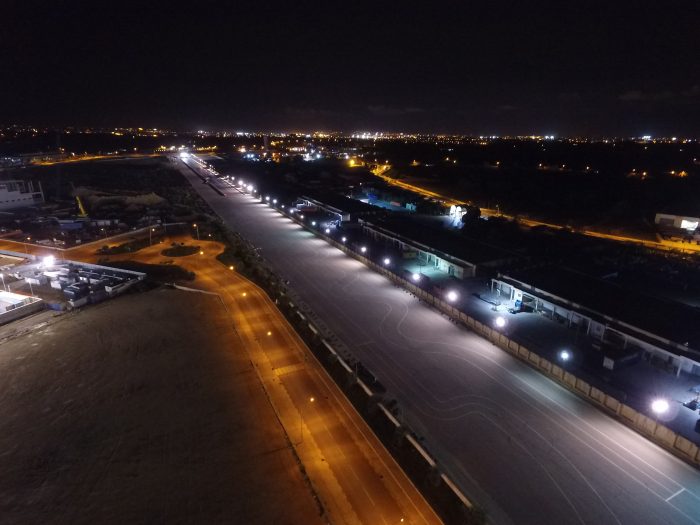
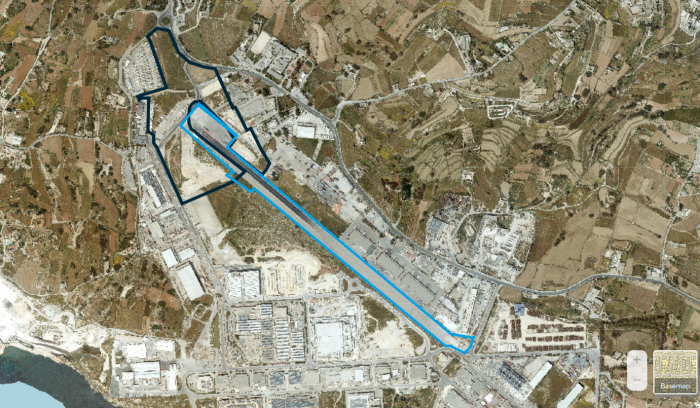

Northern Shoveler at Salina new wetland area
The Northern Shoveler (Maltese name: Palettuna), a member of the ducks and geese family, is a medium-sized duck with a long, heavy broad bill (hence its Maltese name).
This is a bird of open wetlands, such as wet grassland or marshes. It is a dabbling duck and feeds on the surface of the water by holding its beak over the water surface as it swims with its shoulders almost awash filtering food, such as insects, crustaceans and plankton. Occasionally it also feeds by up-ending itself, dipping its head and foreparts in the water with its tail in the air in search of food.
The Shoveler is a common and widespread duck that breeds in wide areas across Eurasia and western North America. It winters in the southern regions of its range and its status in Malta is a regular migrant often seen between August and March. Migrating flocks are often seen offshore but mostly single birds also spend time in BirdLife Malta’s reserves.
The one in this video was observed at the new wetland area at Salina in the middle of September.
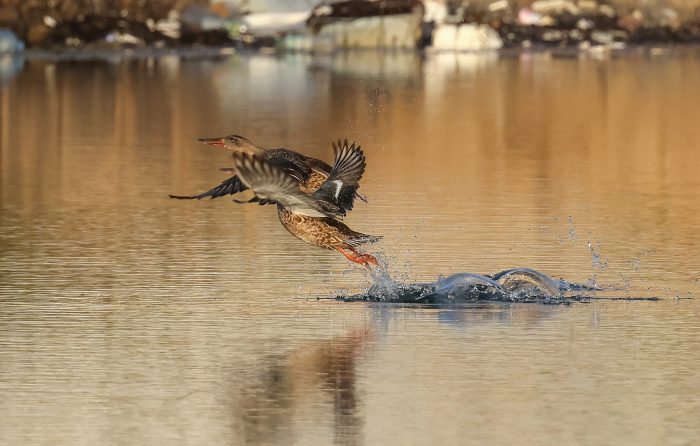
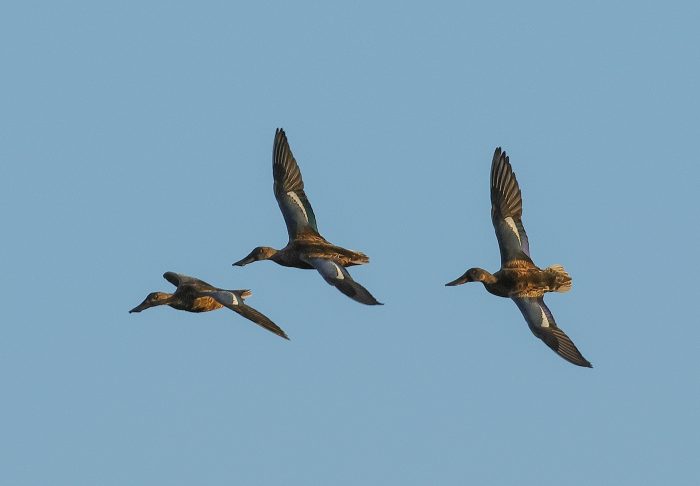
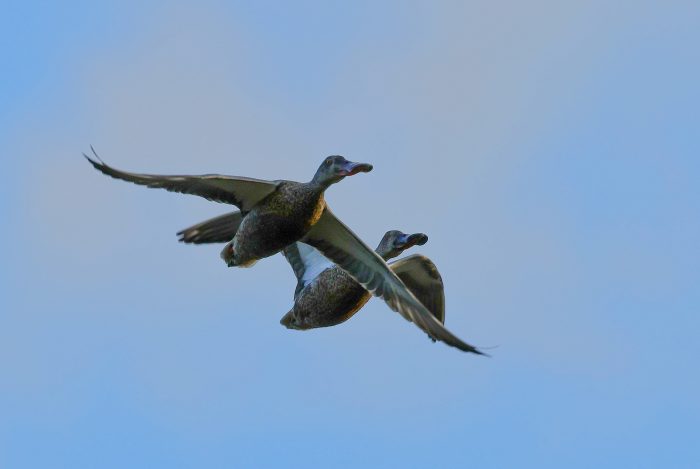
Northern Shovelers in the new wetland area at Salina
Gadwall observed at Simar
A scarce duck species recently visited Simar. The Gadwall (Maltese name: Kuluvert Griż) is a very neat, nicely built and medium-sized duck. It is a delicately-patterned, rather handsome bird, but at long range it tends to look quite dull compared with some more vividly coloured ducks.
The male has a black stern, pale brown scapulars and its body and head are both barred grey. It is not usually found in salt water but may feed in brackish areas at the edges of saltmarshes. The Gadwall is a dabbling duck and therefore it feeds by upending in water and filtering off food with its beak.
In this footage it can be seen together with a Common Moorhen (Gallozz Iswed) and a Common Coot (Tiġieġa tal-Baħar) at Simar.
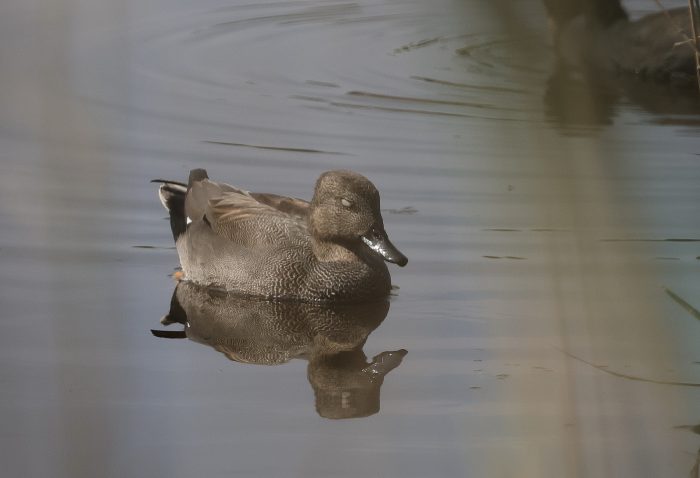
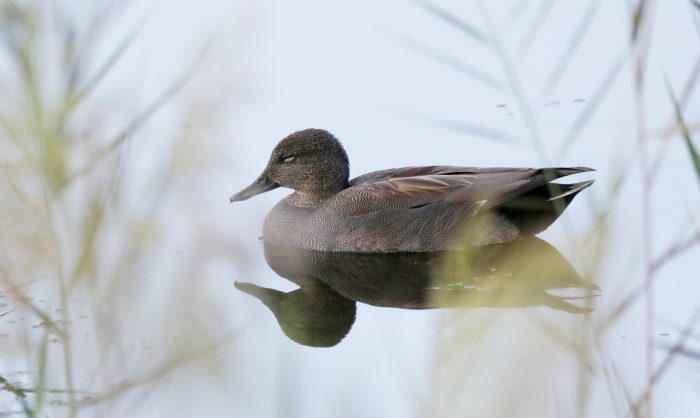
Gadwall at Simar
Credits
Words: Polina Venka, Charles Coleiro, David Attard, Nathaniel Attard, Vera Tokmakova, Francesco DalColle, Marcella Giornetti, Manuel Mallia
Photographs: Aron Tanti, Mario V. Gauci, David Attard, Murat Gelir, Vera Tokmakova, Antoine Monnier, James Crymble, Charles Coleiro
Other pictures : National Policy for the Deployment of Offshore Renewable Energy, PA MapServer and ERA’s Geoportal,
Editing: Antoine Monnier

